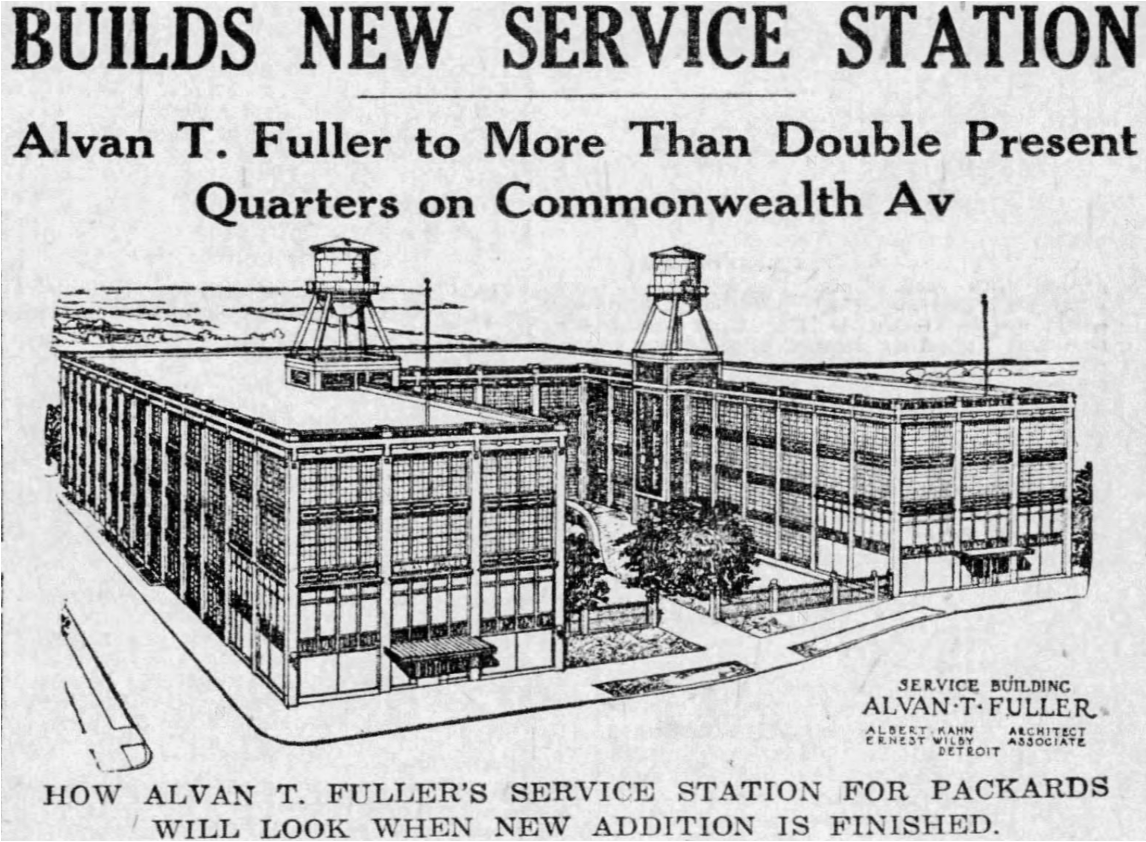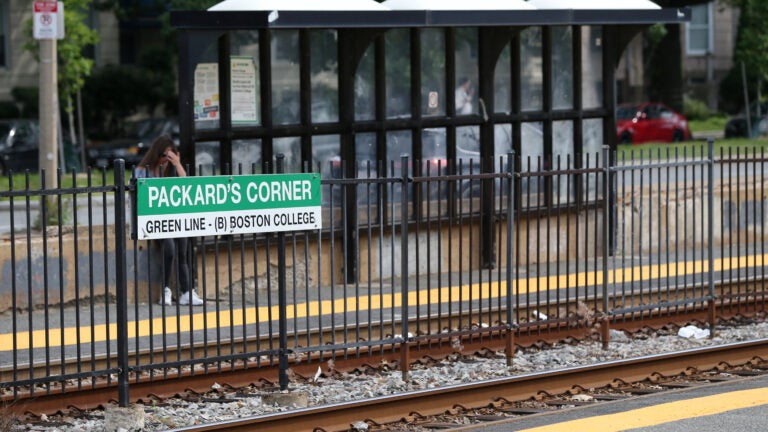Wickedpedia
The answer has much to do with Boston’s historic “Auto Mile.”
If you frequent the Green Line, you are probably familiar with the Packard’s Corner T stop in Allston.
But where did the station — and surrounding area — get its name?
The answer has much to do with the section of Allston being once home to Boston’s historic “Auto Mile” — the largest automobile-related market in New England, extending over a mile west of Boston University, all the way into Union Square.
“It was quite an important site commercially,” Boston-area historian William Marchione recently told Boston.com.
The name “Packard” first appeared in the area with Packard’s Sales Stable and Riding School, once run by John D. Packard, located in the vicinity of Commonwealth Avenue and Brighton Avenue from 1855 until 1920, according to the Brighton Allston Historical Society. The John D. Packard and Sons Company sold over 250,000 thoroughbred saddle horses there.
The area became more developed after 1909 with the introduction of trolley service on Commonwealth Avenue, according to the historical society.
Twentieth-century businessman Alvan T. Fuller continued to perpetuate the “Packard” name when he built the Packard Motor Car Company, the first combined auto salesroom and service station in New England, at 1079-1089 Commonwealth Ave.
The Packard Motor Car Company has since been converted to condominiums and other street-level businesses.
Ken Liss, Brookline Historical Society president, told Boston.com that there is a “little bit of controversy” among the historical community about where the name of the neighborhood actually derives.
Liss said the first mention of “Packard corner” he could find comes from a 1941 classified advertisement, concluding that the name must come from the Packard auto dealership.

Still, some speculate that Fuller hoped the fact that his company and the Packard stable business shared a name would help customers locate his company.
Liss isn’t convinced.
“It was a growing area, and I think that was probably what attracted him, not the fact that there was a Packard business nearby,” he said. “I think that was more of a coincidence.”
An article from The Cambridge Tribune in 1920 reveals the competition between the Packard equine business and the newer dealerships, including Packard Motor.
“‘Automobilitus’ is causing many bodily breakdowns, according to the Packard Riding School people of Allston,” the article reads.
The only treatment, according to the article, is “giving patients troubled with automobilitus a course of riding on the back of a noble horse” which “counteracts the tendency of automobile fans to become gradually atrophied for want of exercise.”
“Dozens of our Cambridge business men and society people are driving their machines to the Packard place in the early morning hors and are getting the zip and twang of the morning air on the back of a good horse,” The Cambridge Tribune said.
However, more and more auto businesses continued to pop up in the area.
According to BU Today, there were auto dealerships all along the street frequented by Boston University students and Allston residents. Nash vehicles were sold where the College of Communication is today, General Tire and Exide Batteries were sold at the now Metcalf Science Center, and the Noyes Buick building has since been transformed into the College of Fine Arts, just to name a few.
In the early 1900s before the Depression, roughly 117 automobile-related businesses sprung up along Commonwealth and Brighton avenues, which sunk to 54 by 1932, Marchione wrote in his book.
Still, the heart of the “Auto Mile” remained Packard’s Corner.
“[Packard Motor Car Company] was certainly the most important of the various automobile-related facilities in that location,” Marchione said.
What set Packard Motor Car Company apart, he said, was its large facility, designed by Albert Kahn, and the annual open houses the company hosted on Washington’s birthday. Other car dealers were quick to follow suit.
“It was a very exciting occasion,” Marchione, who had attended the event with his father, said. “The new automobiles were on display.”
Liss said Fuller eventually moved his company from the original Packard complex to 808 Commonwealth Ave. — where Boston University’s College of Fine Arts gallery and the Howard Thurman Center now resides.

Remnants of the dealership still remain, including the street-level showroom that now exhibits student artwork.
“There was a ramp going two ways that cars could drive up and down,” Liss said. “It’s still there.”
Boston.com Today
Sign up to receive the latest headlines in your inbox each morning.

